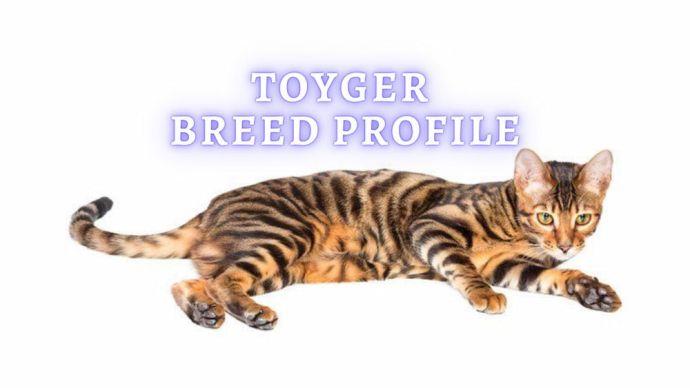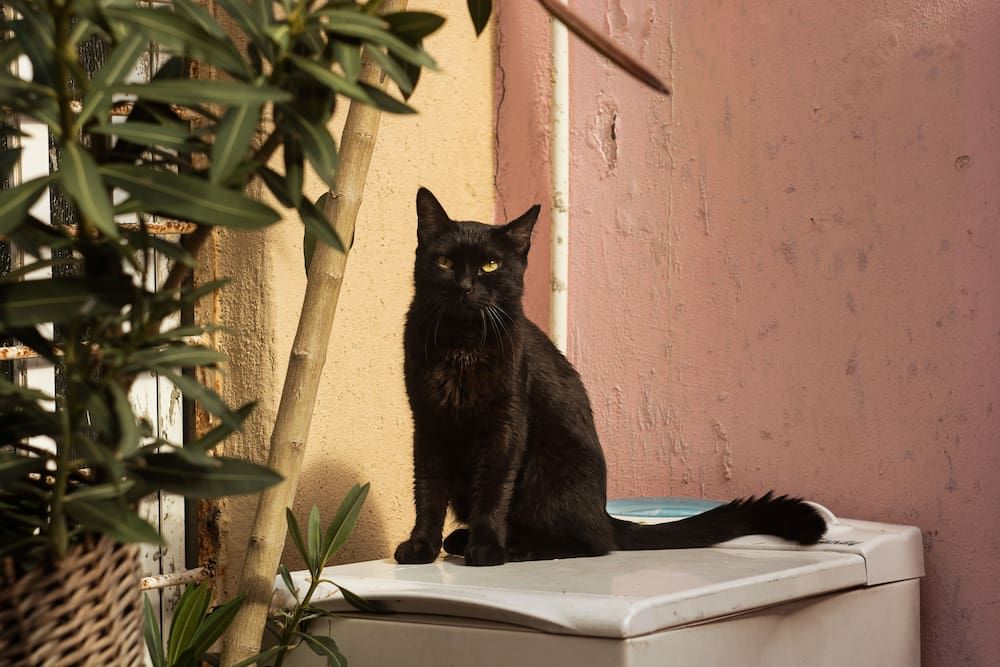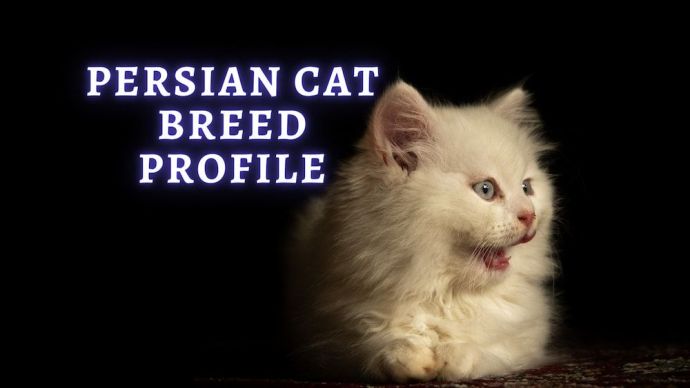Bombay Cat: Breed History, Price and Personality
Written by:
Author: Seb Jenkins
Seb is a professional SEO writer with a degree in Journalism, he has five years of experience in writing and editing. Seb specializes in topics like dog and cat breeds, aquarium guides, and pet care. He is passionate about educating and entertaining animal owners worldwide. In his spare time, Seb enjoys writing fiction novels.
View all 83 articlesLearn about our editorial process and veterinary review board.
Viewed: 128
Updated on: 06/08/2023
When it comes to welcoming a new feline friend into your home, it is more complex than picking the one you think is most adorable. Researching personality traits and needs is a must to find out whether a cat fits into your family dynamic. While Bombays are extremely friendly and a pleasure to have around the home, they are also rather needy animals. But it is no surprise that you are researching the Bombay breed as the next possible addition to your family. Fortunately for you, we have compiled an all-you-need-to-know guide right here.
The following are the main characteristics shown by the Bombay:
| Characteristic | Description |
| Height | 9-13 inches |
| Weight | 8-15 pounds |
| Lifespan | 12-16 years |
| Color | Black |
| Group | Short-haired, medium-sized cat |
| Temperament | Needy, playful, social, affectionate |
| Intelligence | High |
| Social skills | Very social with people |
| People skills | Sociable and loves to play |
| Children | Great within the family dynamic. |
READ MORE: Most Affectionate Cat Breeds
Fun Facts
- The Bombays likes it warm, so don’t be surprised to see them sleeping underneath a radiator.
- The Bombay cat is not and never has been from Bombay (named by cat breeder Nikki Horner).
- Bombay cats like to burrow underneath blankets, in piles of laundry, or in your bed.
Breed History
The Bombay cat breed was created by a desire to breed something that looked like a mini black panther. A breeder in the United States named Nikki Horner sought to achieve this goal, and it took her many years to finally get it right. She used American shorthair and Burmese cats to get a jet-black, muscular-looking feline. Bombay was chosen to reference India, the original inspiration behind her breeding mission. Like many crossbreeds, the Bombay took traits from both sides of the family. The muscular body and social nature came from the Burmese, while the American shorthair inherited the laid-back attitude. In 1976, the Bombay cat was accepted into the Championship category by the Cat Fanciers Association before receiving International Cat Association recognition three years later.
Bombay Cat Personality
Although cats are generally very independent creatures, that isn’t a trait that carries over to the Bombay breed. They love nothing more than spending time with their humans in a rather dog-like attitude. They are extremely friendly and social cats but can also be described as needy and require much human attention. If your house is left empty for long hours every day, Bombay may not be the best breed choice. Bombays suffer from depression if you leave them on their own for long periods. The Bombay cat loves their main humans more than anything in the world, but they are curious and friendly with strangers. If someone new comes into the house, they will likely go and check them out. Bombay cats are also friendly with children, but they should be gentle. If you have other animals in the house, you will be happy to know that Bombay cats usually get along fine with dogs and other felines. They can actually form tight bonds if raised together with other animals.
| Personality trait | Out of 5 |
| Affectionate with family | 5 |
| Shedding | 2 |
| Health | 4 |
| Playfulness | 5 |
| Vocal | 3 |
| Kid-friendly | 5 |
| Stranger-friendly | 4 |
| Easy to groom | 5 |
| Pet-friendly | 5 |
| Intelligence | 5 |
Feeding and Diet
Like most cats, Bombay is always at risk of obesity, so you must watch how much you feed them. Because of their rather stocky build, Bombay is more susceptible to obesity than most, so do your best to keep them fit and lean. The fitter they are, the lower the risk of heart problems, arthritis, diabetes, and more. We do not recommend you use free-feeding techniques with your Bombay, which is when you leave food out for them to snack on throughout the day. This leads to weight gain and obesity. Instead, give them two clear meals per day. You will be happy to hear that Bombay cats do not have any specific nutritional needs. However, they do best on a high-quality diet. Fresh food would be ideal for a Bombay, but if you are unable to provide this then a brand with good protein and limited carbohydrates would serve your cat well. The main ingredient of this food should be meat or fish, the real kind rather than filler or replacements. It is also always a good idea to purchase food targeted towards your cat’s age range to ensure they are getting all the stuff they need to remain healthy. You should also cater the portion size to the size of your Bombay cat and their energy levels – to avoid them becoming overweight or malnourished.
Grooming and Shedding
You will be happy to know that Bombay is extremely easy to groom, thanks to its short and fine coat. All you have to do is brush them once per week to keep their coat clean and healthy. They do not shed much and often keep themselves naturally clean. However, you can still treat them to the occasional bath to keep them extra fresh. While you’re there, you should also take the chance to brush their teeth and trim their nails to keep their health at optimum. We also recommend checking/cleaning their ears to prevent the build-up of dirt and bacteria.
READ MORE: Cat Breeds That Don’t Shed
Known Health Problems
Bombay cats are generally very healthy, but you should still keep an eye out for common problems, which can include:
- Asthma,
- Pneumonia,
- Obesity,
- Poor tummy,
- Breathing problems,
- Bronchitis,
- Eye tearing,
- Hypertrophic cardiomyopathy.
Regular vet check-ups are necessary with any animal, no matter their track record of health. One thing to look out for, which is standard with many cats, is signs of dirt building up in the ears, which can lead to a possible infection. You could also look to converse with your vet about a tooth brushing plan for your Bombay. Our general advice would be to always be on the lookout for changes in their behavior or any signs of pain/distress.
READ MORE: Best Cat Food for Weight Loss
Exercise
Young Bombay cats are often bundles of energy. You will likely see them climbing, running, jumping, chasing, and following you all day. They love nothing more than some good old playtime with their favorite human. We recommend playing active games with your Bombay to keep them active, healthy, and stimulated. This can include using laser pointers for them to chase, playing fetch, or investing in toys and puzzles for them to use. Having another pet can also give them a playmate to wear each other out.
Adoption
Because they are so rare and tricky to get your hands on, the chances of finding one in a shelter or adoption agency are pretty slim. Of course, we always recommend giving a home to a cat who needs one rather than purchasing a bred kitten, but if you have your heart set on a Bombay, that may prove tricky. If you want to try and find a Bombay adoption, these are good places to start:
Breeders
This is your best chance of finding Bombay cats local to you. The Bombay is quite a rare cat to find across North America, with there only being a handful of well-respected breeders. It may take a fair bit of searching to find one. Some simple research into your local area should reveal some breeding options to you. Always select a breeder who has good reviews to ensure that you are actually getting a healthy Bombay kitten rather than something else.
Conclusion
And there we have it, everything you need to know about the Bombay cat breed. They truly are a joy to have around the family home and will be a welcome addition to your group. If you have any further questions, feel free to share your thoughts in the comments section below. We wish you all the luck with your new pet!
FAQs:
Is a Bombay cat a rare cat?
There are only a few breeders around North America so it is quite a rare cat to get your hands on and may require a fair bit of searching.
What is the difference between a Bombay cat and a black cat?
A Bombay cat is the result of breeding between the American Shorthair and the Burmese, creating a muscular, jet-black cat that looks a lot like a miniature panther.
How much do Bombay cats cost?
Usually, a purebred Bombay kitten will cost between $500 and $700, but some high-quality breeders may charge as much as $2,000.
How can I tell if my cat is a Bombay cat?
If your cat has a short, fine, jet-black coat and a muscular build that makes it look a lot like mini panthers, then chances are it could be a Bombay cat, but you can always ask an expert for a professional opinion.
 Cat Breeds Toyger Cat: Toy Tiger Cat Breed History, Personality, Adoption, Cost
Cat Breeds Toyger Cat: Toy Tiger Cat Breed History, Personality, Adoption, Cost - 1080
- 0
 Cat Care Why Does My Cat Attack My Legs? 10 Reasons Why and What To Do About It (Vet-Approved Advice)
Cat Care Why Does My Cat Attack My Legs? 10 Reasons Why and What To Do About It (Vet-Approved Advice) - 46013
- 21
 Cat Veterinary Tips Cat Stomach Gurgling: Vet Advice on Why is Your Cat Stomach Gurgling?
Cat Veterinary Tips Cat Stomach Gurgling: Vet Advice on Why is Your Cat Stomach Gurgling? - 36469
- 4
 Cat Veterinary Tips My Cat Lost its Voice: Can Cats get Laryngitis? (Vet Advice)
Cat Veterinary Tips My Cat Lost its Voice: Can Cats get Laryngitis? (Vet Advice) - 23554
- 13
























